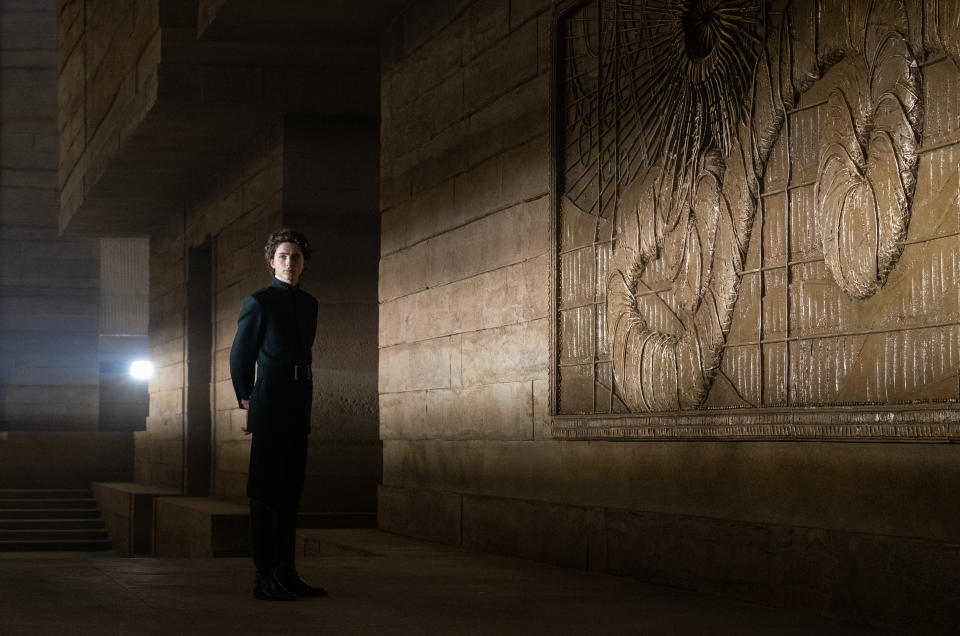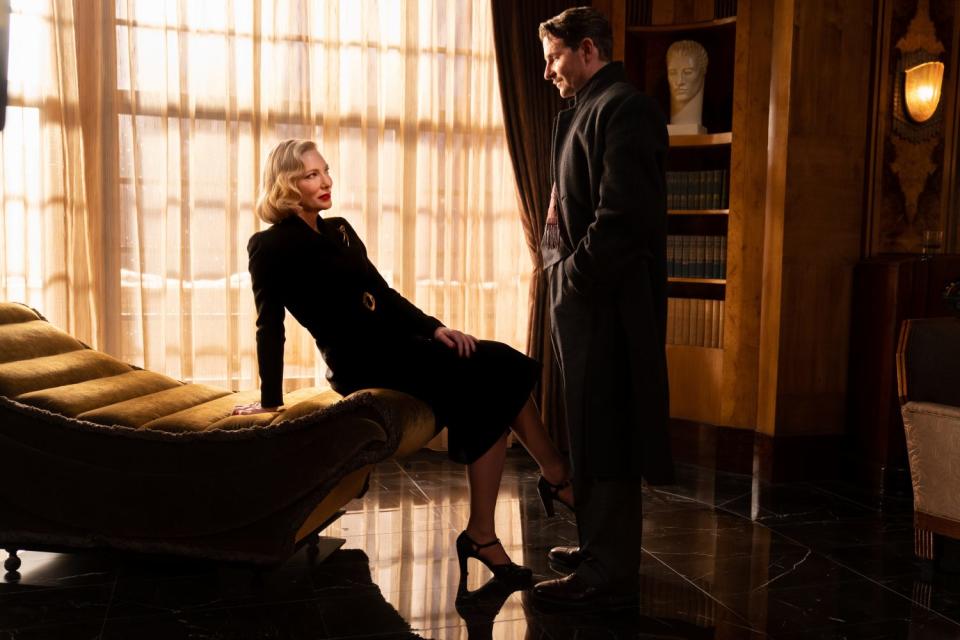Oscars 2022: Best Production Design Predictions

Last Updated March 7: Dune,” “Nightmare Alley,” and “No Time to Die” were the big film winners March 5 at the 26th Art Directors Guild Awards (held at the Intercontinental Los Angeles Downtown). However, the production design race now comes down to “Dune” and “Nightmare Alley.”
Last Updated February 9: The production design Oscar nominees — “Dune” (Warner Bros.), “Nightmare Alley” (Searchlight/Disney), “The Power of the Dog” (Netflix), The Tragedy of Macbeth” (Apple TV+), and “West Side Story” (20th Century/Disney) — are all creative examples of world building which defy genre expectations.
More from IndieWire
However, the ambitious and imaginative world building for Denis Villeneuve “Dune” is the frontrunner for production designer Patrice Vermette and set decorator Zsuzsanna Sipos. They oversaw an assortment of large-scale sets at Origo Studios in Budapest. There’s the castle of the Atreides family on the ocean planet Caladan and distinguished by its Norwegian vibe with mottled hues. The interiors of the desert planet Arrakis have an Egyptian influence with stark browns, ochres and arid reds. The Goth-looking planet, Giedi Prime, contains dark, cavernous interiors, where they also built the steam bath of the large, imposing Baron Harkonnen (Stellan Skarsgård). Additionally, Vermette, art director David Doran, and concept artist George Hull created the ornithopters: huge winged flying vehicles that resemble dragonflies. Built by London prop makers, BGI, they had a wingspan of 129 feet and they were 75 feet long.

Kerry Hayes
With “Nightmare Alley,” Guillermo del Toro went noir for the first time, reworking the macabre cautionary tale of ruthless grifter Bradley Cooper. Production designer Tamara Deverell and set decorator Shane Vieau put together a working carnival with custom-dyed fabric treatment and authentic signage. The highlight was the funhouse, which del Torro described as the living hell that haunted his childhood dreams. By contrast, the Art Deco of high society Chicago is imbued with the facade of elegance in the hotel and nightclub, while the stylish office of psychiatrist Cate Blanchett is infused with fine Rorschach detail in the woodwork that hints of entrapment.
Oscar-winning production Adam Stockhausen (“The Grand Budapest Hotel”) tackled the musical for the first time with Steven Spielberg on “West Side Story” (with set decorator Rena DeAngelo). Stockhausen brought a gritty authenticity to the late ’50s backdrop for the turbulent love story and violent rivalry between the Jets and Sharks. There were location shoots in New York City (Washington Heights, Harlem, Queens, the Bronx) and New Jersey (Patterson, Newark), with the newest wrinkle being the addition of the demolition wrecking ball as part of the rezoning of the Upper West Side’s San Juan Hill that would eventually become Lincoln Center. This helped create geographic distinction, with the wreckage already in place for the Jets’ neighborhood. For the indoor scenes, they shot at Brooklyn’s Steiner Studios, making creative use of the historic Navy Yard (especially for the Rumble in a salt rock warehouse). The biggest logistical challenge occurred for the showstopping “America” dance sequence, which spanned various Queens and Patterson locations, and concluded with the Puerto Rican block party shot in Washington Heights.
With Jane Campion’s psychological western, “The Power of the Dog,” production designer Grant Major and set decorator Amber Richards Richards built an imposing house for cattlemen brothers Benedict Cumberbatch and Jesse Plemons that served as a minor character. Set in Montana of the 1920s but shot in New Zealand, the eastern-style Craftsman design is rambling, dark, and oppressive. The geography of the house also plays a part in the character dynamics, particularly a broad staircase that becomes a perch for Cumberbatch in his ongoing torture of sister-in-law Dunst. A Spartan bedroom with two cots conveys the brothers’ shared history and deep connection.
For Joel Coen’s black-and-white, noir treatment of “The Tragedy of Macbeth,” starring Denzel Washington and Frances McDormand, production designer Stefan Dechant and set decorator Nancy Haigh blended influences from “Siegfried,” “The Passion of Joan of Arc,” “Sunrise,” and “The Night of the Hunter” for a German Expressionism that leaned in both theatrical and cinematic ways. It was very spare Shakespearean world building, shot on sound stages in L.A., emphasizing large geometric blocks with sets carved out of light and shadow, to express Macbeth’s troubled state of mind.
Below are the nominees ranked in order of likelihood to win:
“Dune”
“Nightmare Alley”
“West Side Story”
“The Power of the Dog”
“The Tragedy of Macbeth”
Best of IndieWire
Sign up for Indiewire's Newsletter. For the latest news, follow us on Facebook, Twitter, and Instagram.

 Yahoo Sports
Yahoo Sports 

